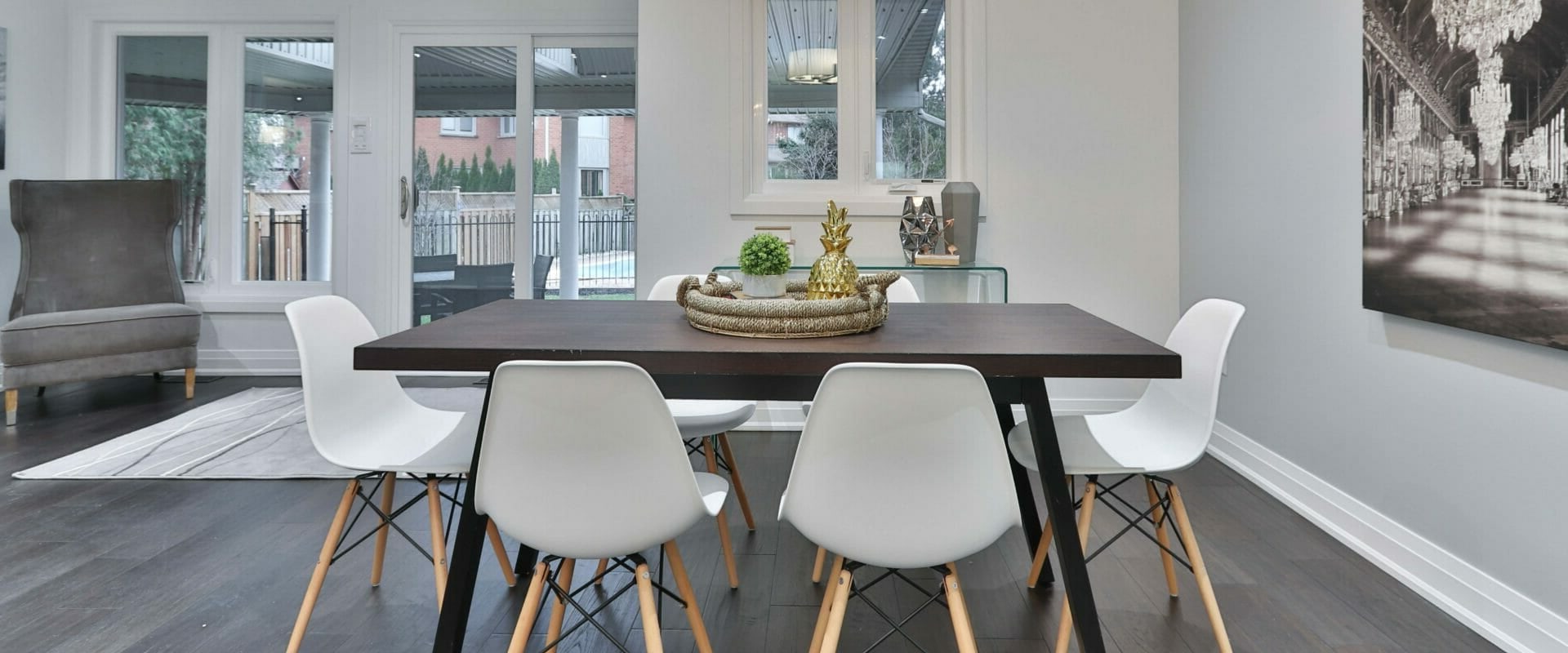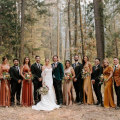Real estate photography is one of the most important aspects of marketing properties. A great photo can be the difference between a buyer looking at your listing and moving on to the next one. But taking stunning photos of properties isn't always easy. That's why we've compiled some of the best tips and tricks for real estate photography.
From understanding the basics of lighting and composition, to mastering post-processing techniques, this guide will help you take your real estate photography to the next level.
Real estate photography
is a key component of any successful listing. Professional-quality photos are essential for capturing the attention of potential buyers and helping your listing stand out from the competition. Taking great real estate photos requires careful consideration of the equipment you use, the lighting, staging, angles, and composition of each shot, and post-processing techniques to enhance the photos. In this article, we'll provide you with some tips and tricks for taking great real estate photos. When it comes to real estate photography, it's important to take it seriously.Quality images can have a huge impact on how successful your listing is, so investing in the right equipment and spending time staging a home can be worth it in the long run. To get started, you'll need to invest in some basic equipment, including a DSLR camera, wide angle lens, tripod, and memory cards. Having the right equipment will ensure that your photos are crisp and clear.
Lighting
is also an important factor when it comes to real estate photography. Natural lighting can be used to create beautiful and inviting shots, but artificial lighting should also be used in certain situations.When taking photos indoors, make sure to turn off any overhead lights and use lamps or other sources of light to create a balanced look. Additionally, setting up reflectors and diffusers can help you achieve the desired effect. Staging is another important factor when it comes to taking great real estate photos. The idea is to create an attractive and inviting atmosphere that potential buyers will be drawn to. This can be done by using props, furniture, and other elements to fill up empty spaces and add a bit of personality to each shot.
Keep in mind that less is more when it comes to staging; try not to clutter each room with too many items.
Angles
and composition are also important when taking real estate photos. Try to vary the angles of each shot so that potential buyers can get a good sense of the space. You should also pay attention to the composition of each photo; make sure there's a good balance between negative space and the elements in each shot. Additionally, always make sure that the camera is level when taking each photo. It's also important to ensure that all the photos are consistent and have the same style.To do this, use a tripod for each shot so that the camera is at the same height for every photo. Additionally, keep your editing consistent by using the same filters and adjustments for all your photos. Lastly, post-processing techniques can help enhance your photos even further. Use software such as Adobe Lightroom or Photoshop to adjust colors, contrast, brightness, and other settings in order to make your images look even more professional.
Style Consistency for Real Estate Photography
One of the most important aspects of real estate photography is ensuring that all of the photos have a consistent style. This will help create a professional and attractive look and feel for your listing.Here are some tips to help you achieve consistent style in your real estate photos:1.Use the same equipment.Using the same camera, lenses, and lighting equipment will help ensure that the photos have the same look and feel. It is also important to use the same settings, such as aperture, shutter speed, and ISO.
2.Use similar angles.
When photographing a home, try to use similar angles throughout each room. This will help create a cohesive look and make it easier for viewers to get a sense of the layout of the property.3.Keep lighting consistent.
Lighting is an important factor in creating a consistent style.Try to use natural light when possible and keep the lighting consistent from room to room. If you need to use artificial lighting, be sure to use the same type and intensity throughout the property.
4.Utilize staging techniques.
Staging can be an effective way to create a consistent look in your real estate photos. Use similar furniture and accessories in each room and keep colors and patterns consistent throughout the property.5.Edit your photos.
Editing your photos can help ensure that they have a consistent style. Try using the same photo-editing software and techniques across all of your photos for a polished, professional look.Post-Processing for Real Estate Photography
Post-processing techniques can help take your real estate photography to the next level.With post-processing, you can adjust exposure, color balance, and other settings to enhance the quality of your images. Some basic post-processing techniques include cropping, color grading, sharpening, and adding contrast and vibrancy. Cropping is an essential post-processing technique for real estate photography. It allows you to remove unnecessary elements from the photo and focus on the subject. Color grading is another important technique that helps you adjust the colors of your images to create a more natural look.
Sharpening allows you to bring out details in the photo, while adding contrast and vibrancy helps make your colors pop. Post-processing can also be used to remove distractions from the background of your photos. You can use a variety of tools to blur or desaturate backgrounds, helping draw the viewer's attention to the focal point of the image. Finally, post-processing can be used to give your images a unique look. You can experiment with filters and other creative effects to make your photos stand out and capture the attention of potential buyers.
Staging for Real Estate Photography
Staging a home for real estate photography is an essential part of creating attractive and inviting photos. When done correctly, staging can draw the eye of potential buyers and help your listing stand out from the competition.Here are some tips and tricks for successful staging:Use Props and Furniture to Highlight Areas of Interest:When staging a home for photography, it's important to use props and furniture to highlight areas of interest. For example, you can use pieces of furniture to create an inviting living space in the living room or use plants and accessories to draw attention to a particular feature in the kitchen. Additionally, adding props like books or pillows can help create a sense of warmth and comfort.
Focus on the Details:
Another key aspect of staging for real estate photography is focusing on the details. You can use small props like throw pillows, candles, or plants to add texture and depth to a room.Additionally, you can hang artwork on the walls or arrange books on shelves to make the space look more inviting.
Create Multiple Configurations:
When staging a home for photography, it’s important to create multiple configurations. This will help create a variety of looks that will appeal to different types of buyers. For instance, you can arrange furniture and props in different ways to create a traditional look, a modern look, or something entirely unique.Be Creative with Lighting:
Finally, you should be creative with lighting when staging for real estate photography. Using natural light from windows and skylights can help create an inviting atmosphere, while strategically placed lamps can add warmth and dimension to a room.Composition and Angles for Real Estate Photography
When it comes to real estate photography, composition and angles play an important role in creating interesting and attractive images.Using the right composition and angles can help you to make your photos stand out, as well as helping to draw attention to particular features of the property. In real estate photography, it is important to use a wide-angle lens to capture the entire room, as this will provide viewers with a good sense of the size and layout of the space. However, it can also be beneficial to take close-up shots of particular features of the property, such as the kitchen or bathroom, in order to give potential buyers a better idea of what the space looks like. When taking close-up shots, it is important to avoid distortion by using a longer focal length. When taking photos of exterior spaces, such as the front of the house or the garden, it is important to use a wide-angle lens and shoot from an angle that best highlights the features of the property. This may mean shooting from a higher angle or from an angle that shows off features such as the landscaping or outdoor living spaces.
It is also important to ensure that there is no clutter in the background, as this can take away from the overall effect. Using creative angles can also be helpful in creating interesting photos. Shooting from an elevated angle or a low angle can create an impactful perspective that will draw viewers in. Additionally, shooting from different angles can help you to capture different features of the property that may not be visible from one particular angle. When taking photos of interior spaces, it is important to keep in mind that lighting plays an important role in creating attractive images. Natural light can be used to create well-lit photos that show off the best features of the room.
If natural light is not available, it may be necessary to use artificial lighting in order to create well-lit images. Additionally, shooting in RAW format allows you to edit your photos more easily. By using the right composition and angles for real estate photography, you can create professional-quality images that will help to draw attention to your listing and help it stand out from the competition.
Lighting for Real Estate Photography
When it comes to real estate photography, lighting can be a make-or-break factor in the success of your photos. You have two main options for lighting your real estate photos: natural lighting and artificial lighting. Let's explore each option in more detail.Natural Lighting
Natural light is one of the best options for real estate photography, as it offers a soft, warm look that can help accentuate the features of a home.If you're shooting on a sunny day, try to take advantage of the golden hour, which is the hour before sunset when the sunlight is softer and more diffused. While shooting during the day, you can also use curtains and blinds to diffuse the natural light and reduce harsh shadows.
Artificial Lighting
If you need extra lighting or if you're shooting at night, artificial lighting is another great option. You can use portable LED lights, studio strobes, or even a combination of both.LED lights are a great choice because they are lightweight and easy to maneuver. They also come in a variety of colors and brightness levels, so you can easily adjust them to fit your needs. Studio strobes are more powerful and can be used to fill in dark areas or add contrast to your photos. No matter which type of lighting you choose, it's important to set up your lights correctly.
Make sure that all of your lights are evenly distributed and placed at different angles to create depth and dimension in your photos. Pay attention to shadows and highlights, as these can add interesting texture and depth to your images.
Equipment for Real Estate Photography
Real estate photography is a key component of any successful listing. To get those stunning shots, you'll need the right equipment. The most important tool for real estate photography is a DSLR camera. DSLR stands for Digital Single Lens Reflex, and it's a type of camera that uses a mirror to reflect light onto the image sensor.This allows you to capture high-quality images with great detail and clarity. DSLRs also offer manual controls, so you can customize the settings to get the best results. In addition to a DSLR camera, you'll need a wide angle lens. Wide angle lenses allow you to capture more of the property in each shot, so you can get a better sense of the size and layout of the space. You may also want to invest in additional lenses, such as a telephoto lens, for capturing details like architectural details or landscaping. Other essential equipment includes a tripod, which is essential for keeping your camera steady and preventing blurriness in your shots.
You'll also need lighting equipment, such as LED lights and diffusers, to help create the perfect atmosphere in each shot. Finally, you may want to consider investing in a remote shutter release, which allows you to take shots without having to touch the camera. By investing in the right equipment and learning how to use it correctly, you can ensure your real estate photos look professional and capture the attention of potential buyers. With the right tools in hand, you'll be ready to take stunning real estate photos that make your listings stand out. Real estate photography is a key component of any successful listing. In this article, we've provided an overview of the necessary equipment, lighting, staging, composition, style consistency, and post-processing techniques for taking great real estate photos.
By following these tips and tricks, you can ensure that your real estate listings stand out from the competition and attract more buyers. So, take the time to invest in professional-quality real estate photography and maximize your chances of success!.




